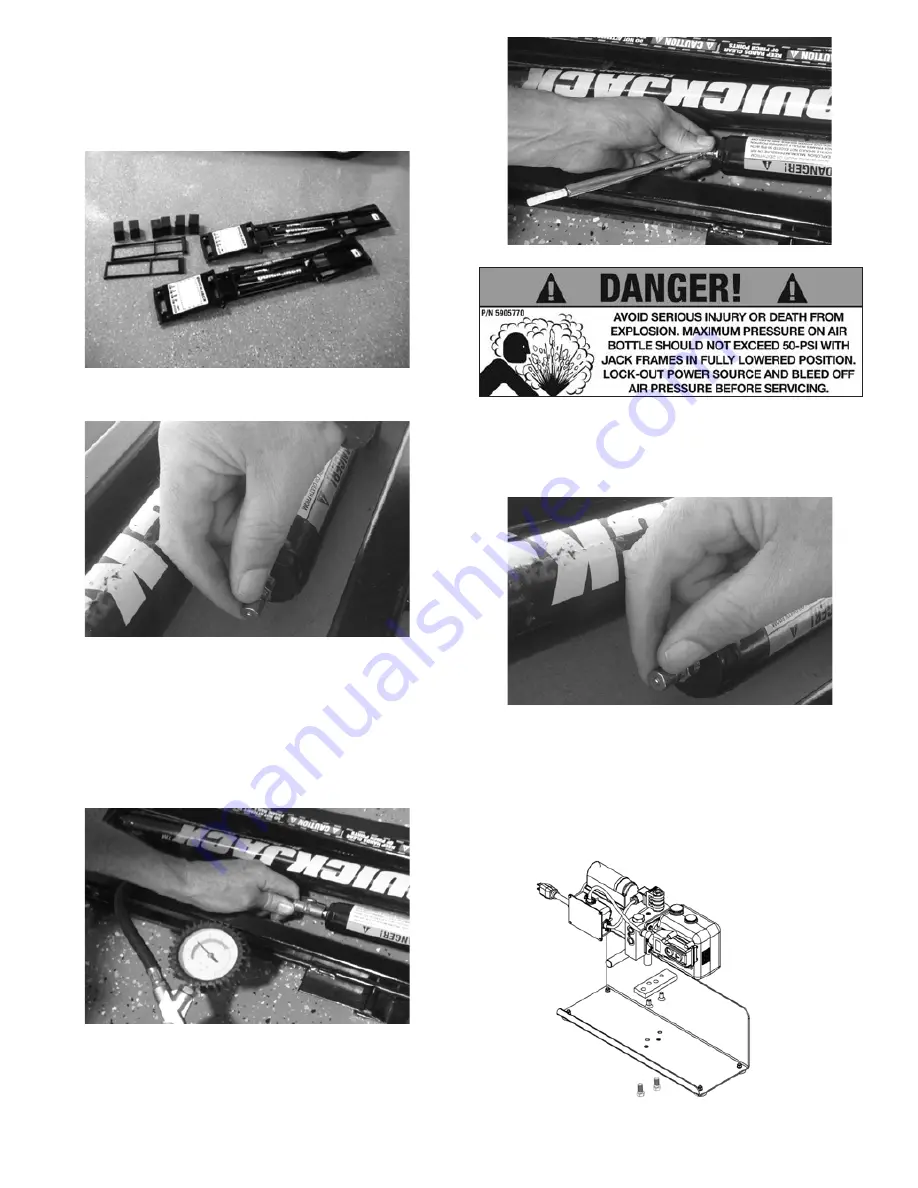
9
STEP 6
Pressurizing Air Bottle Cylinders
1. IMPORTANT: Make sure lift frames are in the fully
lowered position during the following procedures.
2. Remove dust cap from each air inflation valve.
3. If the valve hasn’t been opened for a while, use a
valve tool to release a short hiss of air to check valve
for proper operation and to drain any accumulated oil.
Holding the valve open deflates the air bottle cylinder.
4. Using a pump or air compressor, inflate each air
bottle cylinder to 50-PSI. Pull the connector off quickly
parallel to the valve to minimize air loss.
5. Press the air pressure gauge evenly onto the valve
stem and record the reading given. If there is a
hissing sound, the gauge is not tight or even enough for
an accurate reading.
DO NOT EXCEED 50-PSI.
6. Replace dust caps. The dust cap on each inflation
valve helps to retain air. If the valve does not have a cap,
the air bottle cylinders may deflate noticeably sooner.
STEP 7
Power Unit Assembly
1.
IMPORTANT:
Mount the Power Unit to carrier using
fasteners and spacer as shown in illustration below.










































